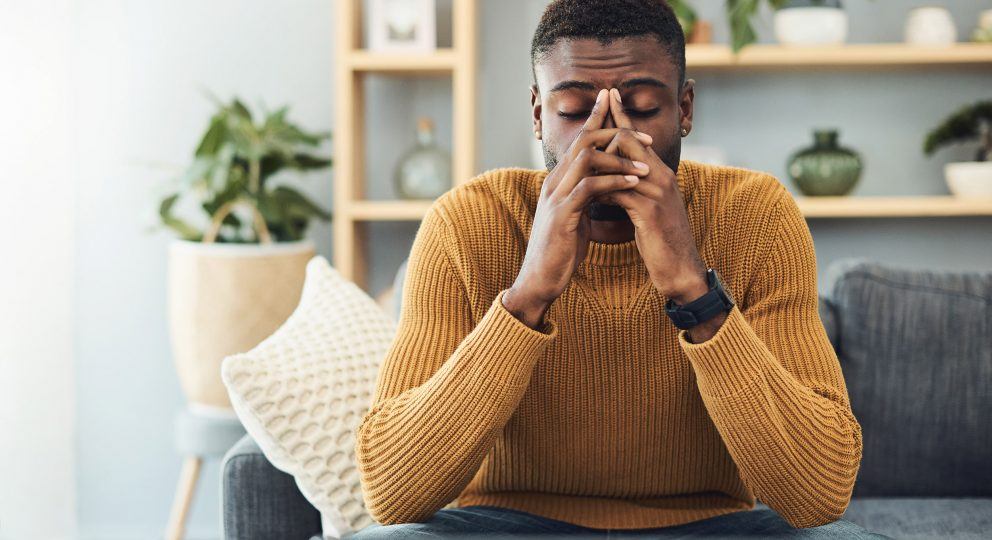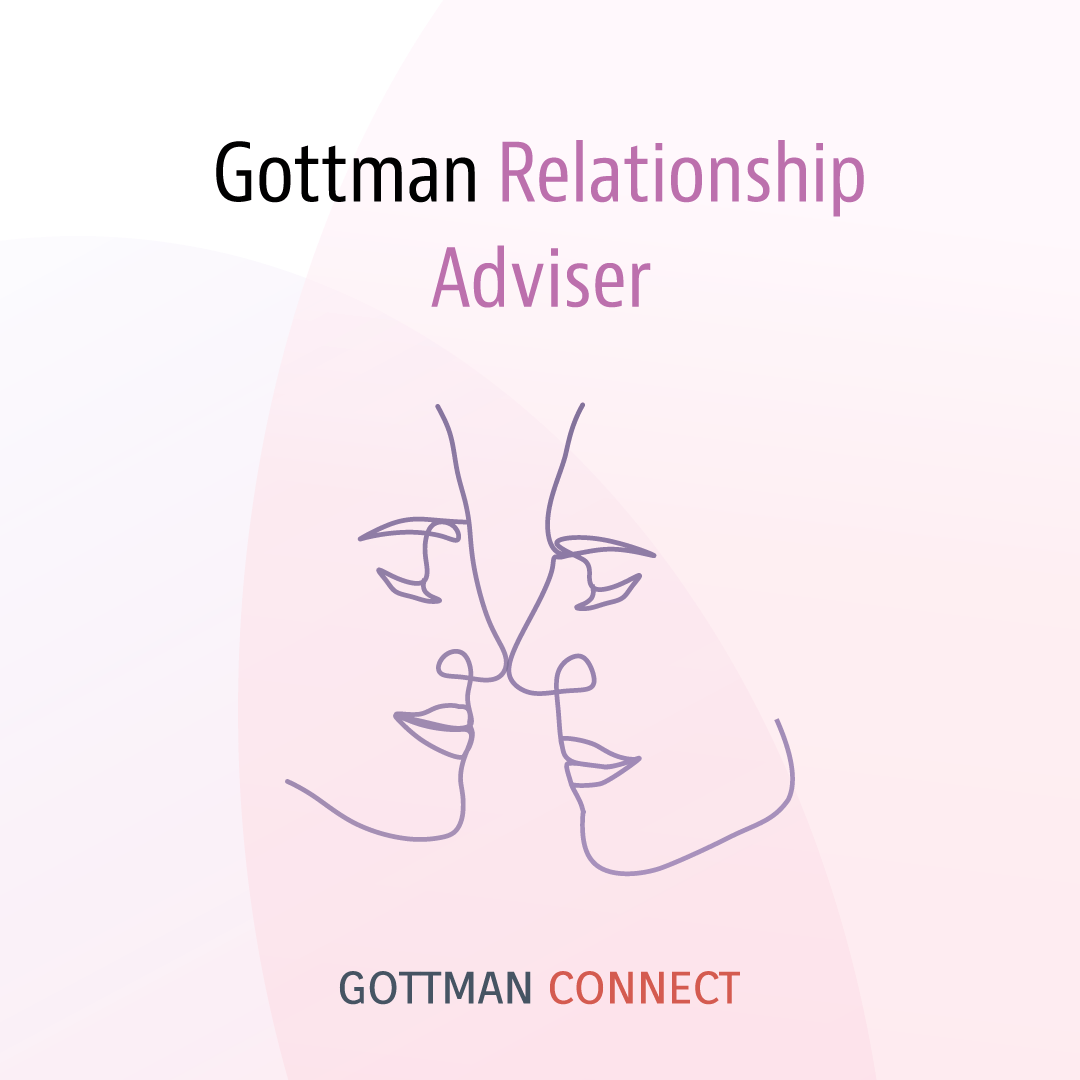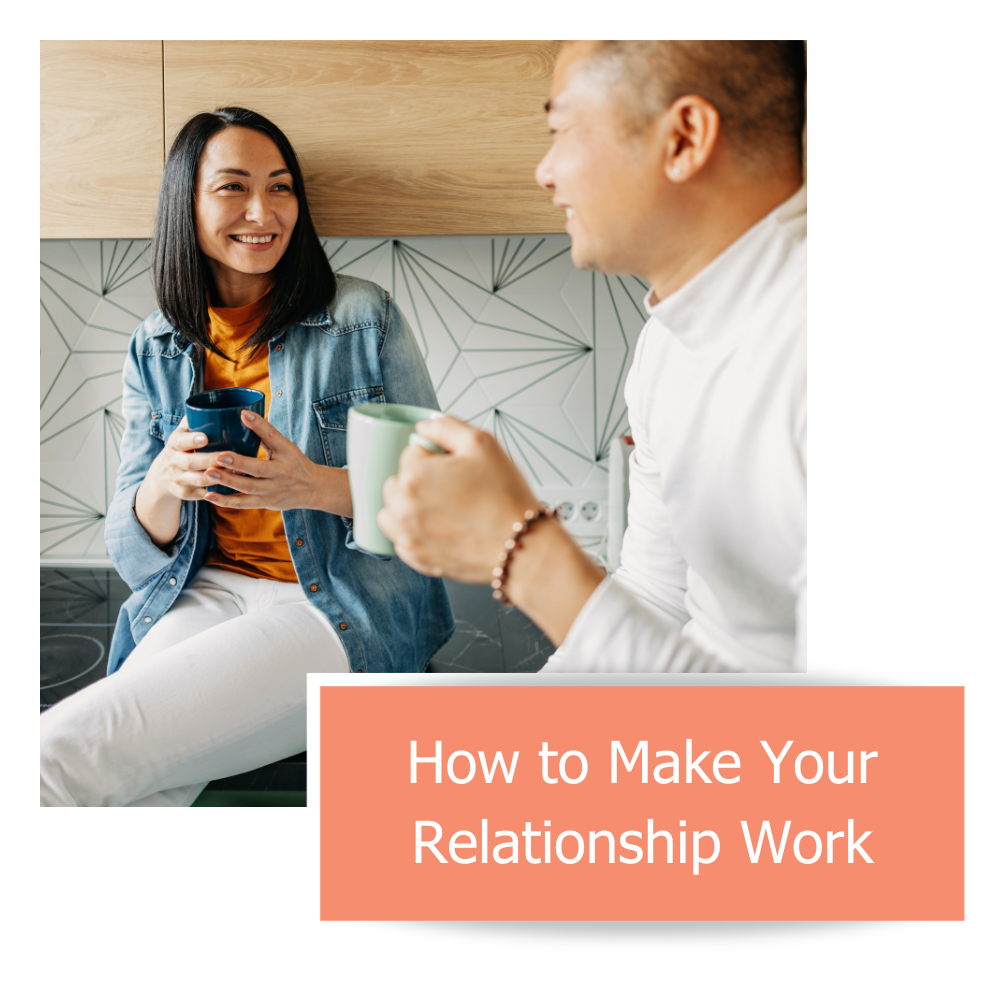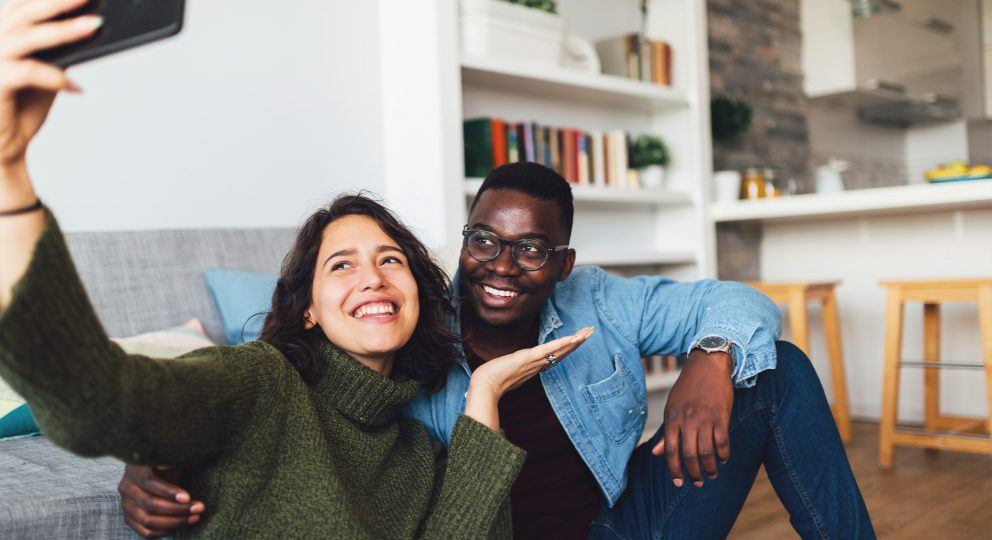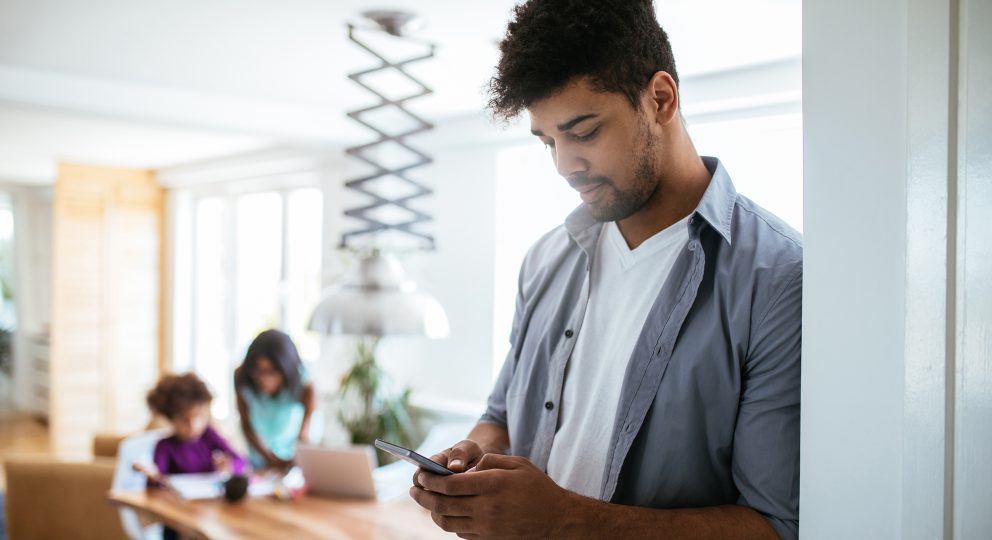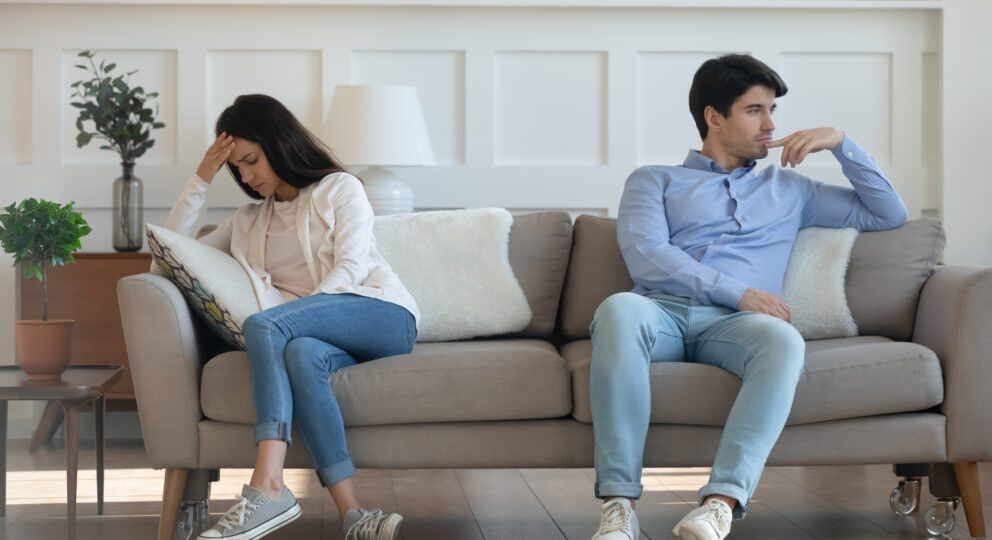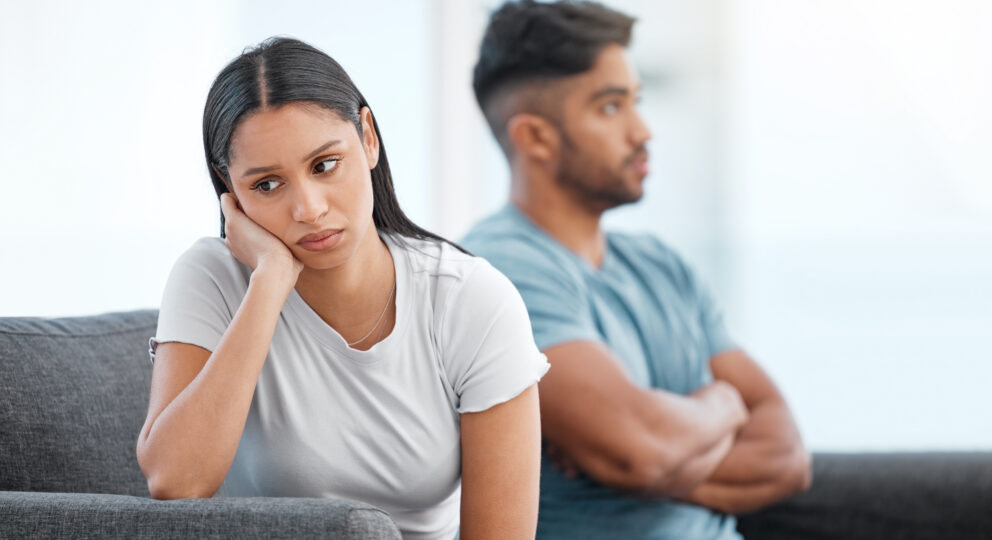Uncertainty is the biggest psychological challenge individuals, couples, and families face during the COVID-19 crisis. There are so many critical unanswered questions about the impact of COVID-19, including:
- How will those infected be treated? Will they receive treatment? Will they survive?
- Will I or any of my loved ones catch the virus? If so, will I or they survive?
- How will the spread of the virus be contained? How long will it take?
- How long will restrictions last?
- What will be the impact on the economy?
- What will be the short-term and long-term impact on life as we know it?
Unanswered questions like these make facing the crisis so overwhelming. In more straightforward disasters, over time, people begin to grieve “who” and “what” they have lost and to move forward with life. The uncertainty and ambiguity related to the ongoing COVID-19 virus make grieving much more complicated. Overwhelmed by stress, people alternate between feeling extremely overwhelmed or acting as if nothing has changed, which leaves them coping poorly or unable to cope.
In this post, I will explain a theory called “Ambiguous Loss,” developed by Dr. Pauline Boss, which helps us understand and cope with uncertainty. I will then adapt Dr. Boss’ recommendations to help individuals, couples, and families face the COVID-19 crisis. I will also provide tools from Drs. John and Julie Gottman and others to help people put Dr. Boss’ recommendations into action to help people cope and live well in these uncertain times.
Ambiguous Loss
Dr. Pauline Boss of the University of Minnesota has developed a theory called “Ambiguous Loss,” which provides guidelines for facing uncertainty. I learned her theory and techniques before I went to Sri Lanka to provide support after the 2004 Boxing Day Tsunami. I taught them to grateful counselors there at the time and on many of my 22 subsequent visits. I want to share them here as a resource to help people cope with the COVID-19 crisis.
According to Dr. Boss, one type of ambiguous loss can be a loss or losses, which are more complicated because they involve unimaginable circumstances that result in ambiguity or uncertainty. Grief becomes frozen. People do not know what they are grieving, and how to begin to move forward with life. For example, after the World Trade Center Disaster and The Boxing Day Tsunami, survivors lost family members suddenly in horrific ways beyond imagination. They were uncertain about whether their loved ones had died, if and how to grieve, and how to move forward. With no templates to guide them, they struggled with how to cope. They alternated between acting as if the disaster had not happened and re-experiencing the trauma as if it were happening repeatedly. Dr. Boss refers to this cycle as chronic re-traumatization. Dr. Boss’ theory is used to help people in these kinds of disasters cope and live well with uncertainty.
The COVID-19 crisis poses similar challenges. As survivors, we remain physically present in our homes and communities as the crisis continues to unfold. We and our friends and loved ones face the threat of becoming infected and even dying. Life as we knew it has and will dramatically change. So much remains to be seen. We are left, psychologically, to make sense of these changes and losses and how they will affect our lives.
The following recommendations are based on Dr. Boss’ guidelines. I have adapted them to help people face the COVID-19 crisis.
1. Label the Losses as Uncertain or Ambiguous
When thinking about or discussing the crisis with family and friends, label the changes and losses as “uncertain” or “ambiguous.” Remember that feeling confused, hopeless, disoriented, discombobulated, or overwhelmed is normal. Acknowledge that crises of this nature are the most difficult to face because so much is uncertain.
Labelling the changes and losses as “ambiguous” or “uncertain” helps people understand why facing the COVID-19 crisis is so challenging:
- People are living in a horrific context that is beyond their human experience.
- Life has changed dramatically and continues to do so on a day-to-day basis in ways that are uncertain, and involve the threat of infection, loss of life, and financial survival.
- The ultimate impact on the economy is unknown.
- There are no straight-forward answers to the ever-changing complex problems people face that result from this crisis.
- Achieving a true sense of mastery over problems associated with the COVID-19 crisis is unrealistic.
When people make these realizations, it helps them to:
- Increase their abilities to face the crisis in the moment one day at a time.
- Temper their need for mastery.
- Be more open, flexible, and gentle with themselves.
2. Normalize Ambivalence
Most people feel ambivalent about having to face a major crisis like COVID-19. That’s normal. When people face a crisis that involves uncertainty, the crisis becomes more real. When they avoid facing a crisis, they can pretend it’s not happening. When their ambivalence is understood and even shared, people tend to feel better able to begin to accept their tenuous new normal, share perspectives, and engage in healthy dialogues.
3. Share Perspectives
In an uncertain or ambiguous context, people will have different interpretations of new information about the virus, its impact, and how to manage key issues. That’s to be expected.
In the COVID-19 crisis, examples of everyday new information from the media include:
- How to protect one’s self from the virus.
- How to limit the spread of the virus.
- Current statistics on the virus.
- The impact on the economy.
- The anticipated length of the crisis.
- The anticipated length of restrictions.
In the COVID-19 crisis, examples of key issues include:
- Whether to leave home for work.
- Whether to leave home for other reasons, such as exercise, socialization, caring for more vulnerable family members, etc.
- How to manage related financial concerns or crises.
- How to meet basic needs for food, medical needs, etc.
- How to connect with family and friends.
Friends, family members, and partners do better when they agree to hear and respect one another’s points of view in these uncertain times. In doing so, they create safe places in their relationships, families, and support systems for people to open about their perspectives, which include their concerns, feelings, and needs.
Failure to share leaves people alone with their stress, which can increase feelings of anxiety, panic, and depression. Sharing perspectives in a supportive atmosphere helps people process their experiences and feel securely connected to friends and loved ones. This promotes resilience for all involved.
Discussions about key issues involving diverse perspectives, such as social distancing, managing finances, and others, can become impassioned. Dr. Boss suggests while having discussions, people should be ready to repeat this phrase: “It’s ok if we do not all see it the same way now.” This helps people with different points of view connect with and support one another even with their differences. Here are some resources that help people share and empathize with each other’s perspectives, and make time-sensitive decisions:
Drs. John and Julie Gottman have developed the following tools that help people share and listen to one another’s perspectives:
- The Gottman-Rapoport Exercise helps people with diverse points of view dialogue and empathize with one another.
- The Stress-Reducing Conversation Exercise helps people how to listen and empathize with one another about stress.
- The “Great Listening” card deck (in the free Gottman Card Decks App) helps people to improve their listening skills.
- Emotion Coaching techniques help parents listen to their children’s feelings.
- For partners or family members who are facing time-sensitive issues that require action and a decision, the Gottman Compromise Ovals exercise can help them to do so.
In addition, the Feeling Wheel helps people who are not used to identifying and talking about their feelings do so.
4. Be Flexible and Creative
When people challenge themselves to empathize with each other’s perspectives, they become more flexible and open in their thinking which helps them to cope. The COVID-19 crisis is ever-changing. Flexible and creative thinking prepares people to respond to new information and shifting challenges.
5. Reconstruct Routines and Rituals
Currently, the COVID-19 crisis has shifted everyone except those in the essential workforce to their homes, and away from work and school. In times of crisis and displacement, family members, partners, and friends function better when they conscientiously reconstruct routines and rituals in their new context, rather than forego them.
Routines and roles bring structure to our lives. They help people know what to expect each day, and who will do what. This helps children and adults to function, and cope. Families, partners, and roommates should develop schedules and assignments that take into work and home-schooling obligations, spatial needs, computer access, and support. Routines should include the roles people will play to help the household function, and the tasks they will perform.
Rituals help people connect on a regular basis and live life in fun or meaningful ways. They can be a break or a distraction from the day to day stresses of facing the COVID-19 crisis. People living in the same household should create new rituals for this time when they will be staying home. These can include rituals that involve:
- Family or House Meetings to Talk About Coping and Stress
- Family and Group Meals
- Breaks from Work and School
- Leisure Activities
- Games
- Movies
- Walks
How they are designed is up to all involved. Hopefully, everyone has input.
People can create rituals that bring a lot of fun to their lives. For example, one of my high school friends has started a game night at his house with his family members. They dress the part of characters in board games like “Monopoly.” They take pictures of one another in their outfits and post them on Facebook. Whoever wins gets to choose the game for next night.
People can also create rituals to connect with the outside world through teleconferencing programs like Zoom, Skype, and others. This enables children to see their friends and classmates. Adults can have time with their friends. They can have dinner parties or happy hours or coffee online. All involved can find ways to play games with friends or other families online. People can attempt to connect with friends and family members who they have not had time to connect with prior to the crisis.
Several communities have developed wonderful rituals to help children begin the school day at home, to express gratitude to health care workers, and to honor birthdays or homecomings from the hospital. These rituals are great examples of how to celebrate and live life in a meaningful way during a pandemic while respecting the importance of social distance.
It is important to note that routines and rituals will most likely be modified as restrictions shift in the future, as the need for social distancing changes.
Here are some resources to help couples, families, and friends create rituals:
- Dr. Bill Doherty’s book, The Intentional Family
- Drs. John and Julie Gottman’s exercise “Build Rituals of Connection” is available in a card deck (for couples) in the Gottman Card Decks App. The suggestions are mostly for couples, but the deck includes basic instructions for building rituals that friends and families may use
While neither of these resources have specific ideas for rituals in a time of social distancing, they do explain how couples and families can build rituals.
6. Find Meaning
Finding meaning in times of crisis can help people persevere. Making sense of the existential reasons why a disaster occurs often helps people to cope. Some people will look to their religious or existential beliefs to determine the reasons why this disaster is happening. As we anticipate 100,000-200,00 deaths in the USA, others will feel that the fact the pandemic is occurring is senseless. Dr. Boss reminds us when even we determine that a disaster is senseless or has no meaning, that that is meaningful.
In his book, Man’s Search for Meaning, Viktor Frankl, the late neurologist and psychiatrist, who was a concentration camp survivor reminded us that people who find meaning in their day-to-day lives are the ones who survive disparate circumstances. Frankl once said, “The meaning of life is to give life meaning.” In times of crisis, there are so many ways to take actions that give people a sense of meaning or purpose. Here are some examples:
- At the risk of losing profits, a business owner chooses to close their business to avoid the spread of the virus.
- An individual may find ways to make sure a lonely neighbor has companionship (via the internet).
- Healthcare workers risk their lives in less than optimal conditions to treat the sick and the dying.
People who serve or care for others remind themselves and others that we are all part of a human experience. They relate to suffering and care for fellow human beings. Their intentions and actions give all members of society hope as they struggle to cope and survive.
People can find meaning in how they use their extra time at home. For example:
- A family who is spending more time together may use the crisis as an opportunity to bond or work on their relationships.
- A couple uses their additional time together to actively work on their relationship.
- Friends who have not seen each other in years may find time to reconnect by video or Skype.
- Individuals use extra time to re-examine their priorities and goals.
- Those who lose careers may work to discover opportunities for new career paths.
People can choose to use their time sheltering at home or in lockdown to accomplish important goals. In any disaster, people still have choices to live life in meaningful ways. Their intentions and actions often define them moving forward. Making sense of a disaster and having a strong sense that one’s life remains meaningful helps people persevere in their attempts to cope, survive, and rebuild.
